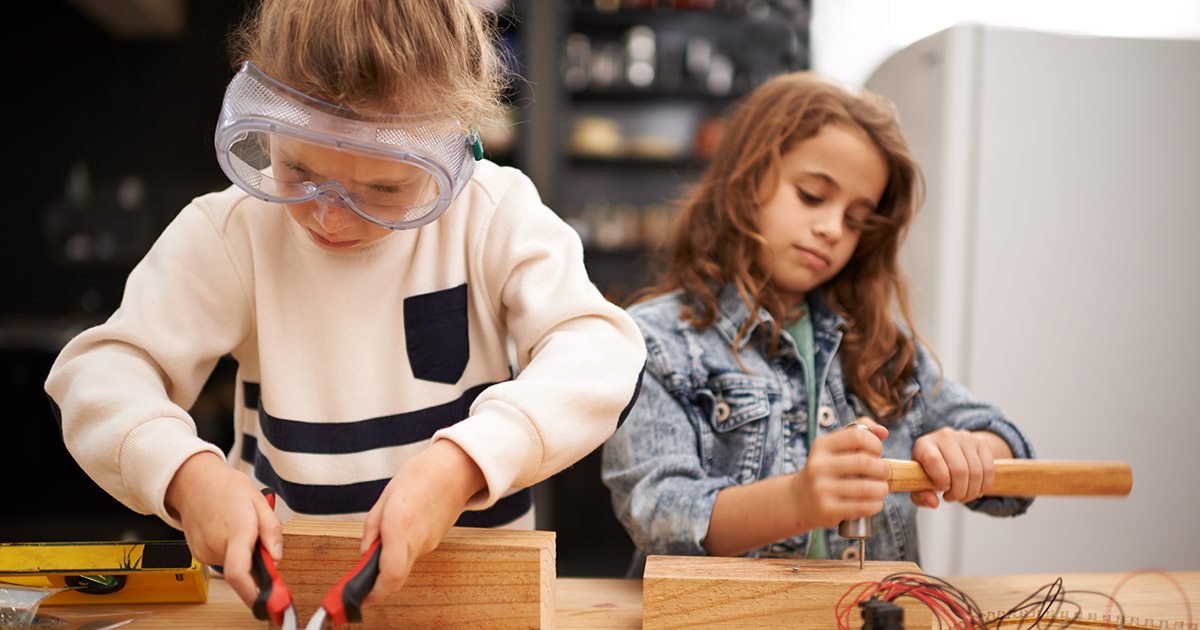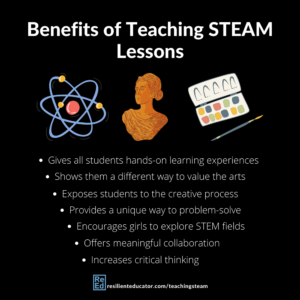
There’s been a big push for incorporating lessons and activities that use STEAM: science, technology, engineering, art, and math. But how exactly do these multilayered projects help students? Here are some of the specific ways in which students can benefit from STEAM in the classroom.
Exposes students to the creative process
When students engage in activities that combine different elements of STEAM, they experience guided inquiry in which they must ask thoughtful questions, discover answers, apply what they learn, and problem-solve creatively. Students learning how to make a wire sculpture that lights up must ask questions about how it works, try out different wiring techniques to get the sculpture to light up, think about the meaning behind their artistic creation, and experience the creative process, going from a design on paper to a tangible, functional object.
Offers meaningful collaboration
Many STEAM projects involve teamwork and thoughtful dialogue in which students exchange ideas and discuss ways to problem-solve. Through these activities, students learn how to divide up responsibilities, compromise, listen to and encourage each other. Some students might approach STEAM with excitement or curiosity, while others might be more timid or apprehensive.
Strategically placing students together in groups can create powerful teams in which students learn how to help each other and figure out how to use their different strengths and skill sets. If students are learning how to create 3D art depicting sea animals, one student might be knowledgeable about aquatic animals, another might be familiar with optical illusions or excited about constructing 3D glasses. Together, their knowledge, enthusiasm, and skillsets can be utilized to help successfully complete the project as a team.
Increases critical thinking
STEAM projects require students to systematically think through problems, applying the information they learn along the way about technology and engineering to figure out the best solutions. Cross-curricular projects also engage different parts of students’ brains so that they are seeing the project through different lenses, focusing on details while also learning to step back and look at the bigger picture.
Provides a unique way to problem-solve
American students don’t tend to do as well as students from other countries when it comes to international assessments that measure math, science, and problem-solving skills. STEAM projects give students a chance to problem-solve in unique ways because they’re forced to use a variety of methods to solve problems that pop up during these types of activities. By experiencing trial and error, learning how to take risks, and figuring out how to really “think outside the box”, students get away from the commonly used approach of applying a known method or formula to solve a set of problems in a step-by-step way. With STEAM, they must solve in more creative, non-linear ways.
Gives all students hands-on learning experiences
While some students grow up in homes in which they are taught how to build and fix things, and are given many manipulatives to do so, others aren’t exposed to these important learning opportunities. STEAM projects give students a chance to engage in hands-on, experiential learning. Students are often using different materials and tools in order to discover how something works, how to build it, and how to fix it. This levels the playing field so that all students acquire these crucial skills, regardless of their gender, socioeconomic status, or race.
Encourages girls to explore STEM fields
Since girls and women are underrepresented in the fields of science, technology, engineering, and math, developing STEAM projects helps girls become familiar with these fields at an early age. Early exposure can increase their chances of exploring these fields further as they get older, and high-quality STEAM projects will still benefit boys as well so that all students are able to acquire these 21st-century skills.
Shows them a different way to value the arts
Using art in STEAM projects helps students understand how varied the arts are, and how they’re an integral part of products that involve engineering, technology, and mathematics. The arts can help increase engagement in STEAM projects since students can connect artistic mediums that they enjoy (like visual arts and music) with more technical projects that may seem daunting at first, such as building an app or programming a robot. They’re able to combine the familiar with the unfamiliar, acquiring new skills, and discovering the world of artistic innovation.
Categorized as: Tips for Teachers and Classroom Resources
Tagged as: Art, Math and Science, STEAM, STEAM - Pillar

